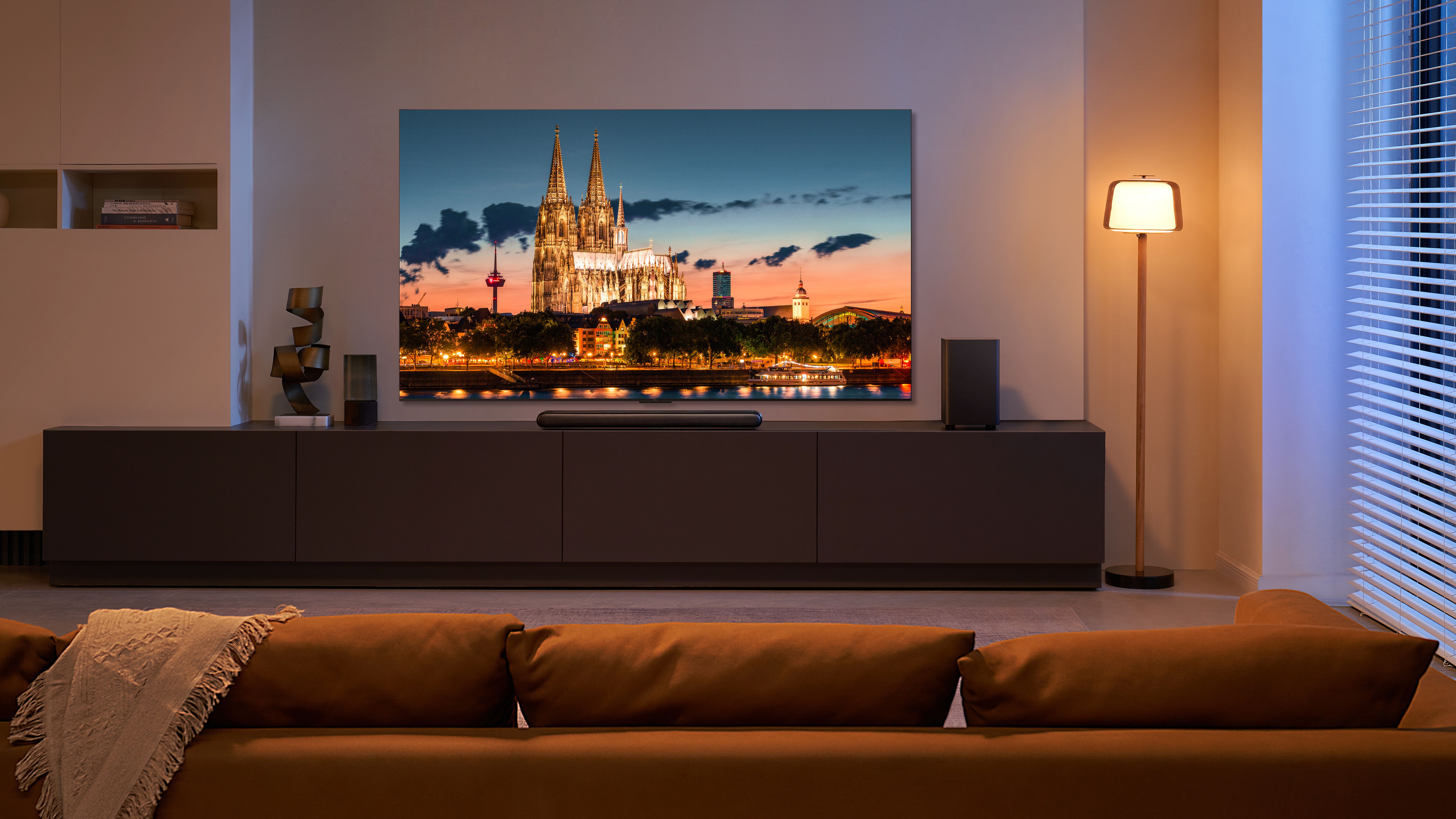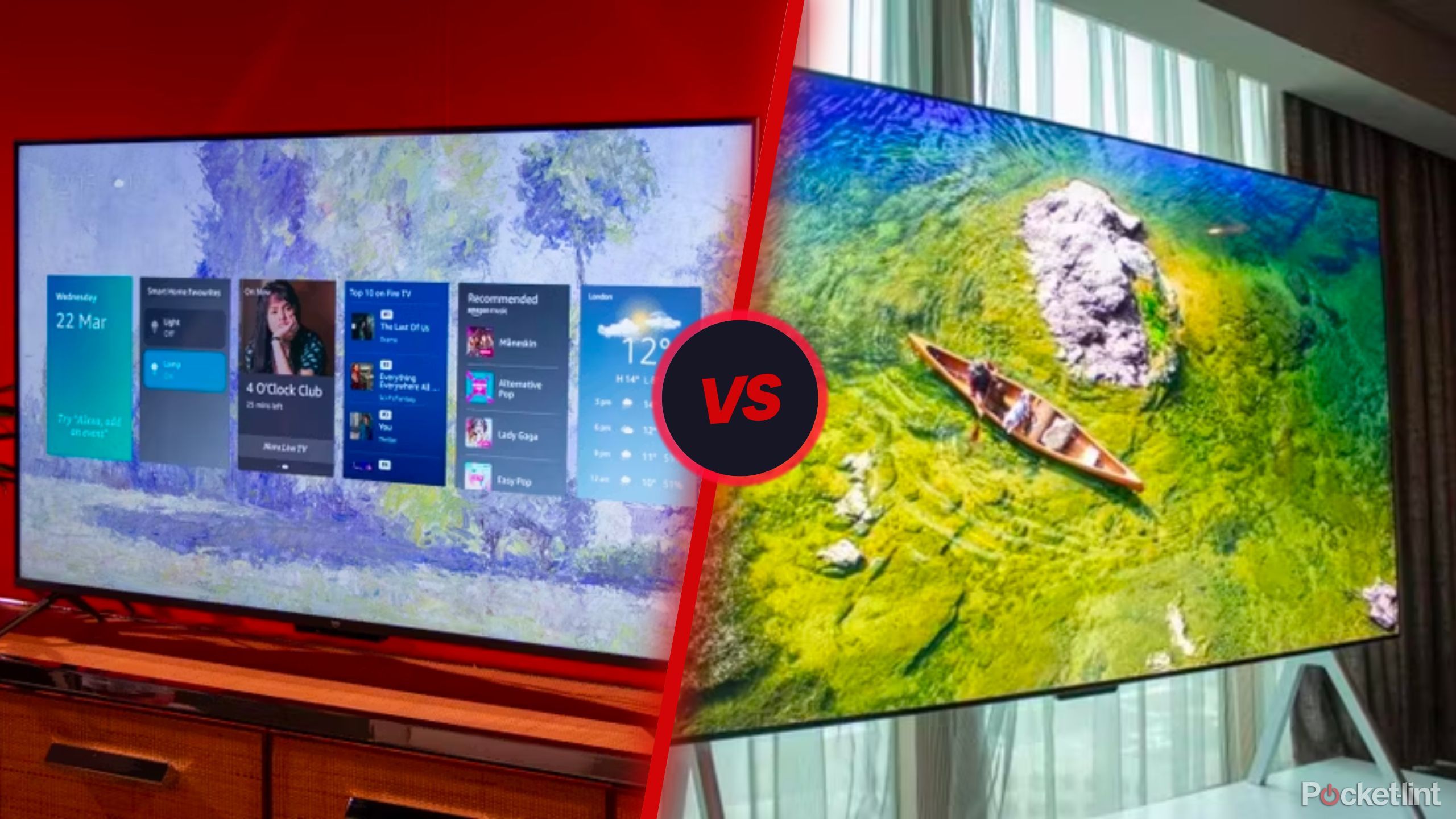Key Takeaways
- New TV models flood the market all year round, causing prices to drop sharply and benefiting consumers.
- TV naming conventions are invented to drive demand and confuse buyers into thinking they need something new.
- Competition drives innovation, so it will be hard to keep up with the latest TV technology.
I’ll be the first to admit it: technology is hard to resist. For some inexplicable reason, new, shiny, expensive and buzzword-laden things like mobile phones, laptops, watches, games consoles and especially smart TVs are incredibly appealing.

Related
These TVs offer a cinema-level experience for under $500
Our picks for the best TVs under $500 will help you save money without sacrificing quality or features.
While most things in the tech world aren’t worth buying right after they’re released, TVs still rank high on the list of most wasteful purchases. It’s not quite the same as buying a new car (though in some cases the price may be similar), spending all your money on a brand new model is certainly not wise.
We’re not saying you should buy a used TV. While that might be worth it in some cases, the point being made here is that you should wait at least six months after a particular TV has been released before buying one. Avoid brand new TVs. Here’s why:
The TV market is saturated
It was good to have competition.
The technology industry doesn’t always have a lot of freedom and choice. Sometimes you don’t have a choice, especially when it comes to social media platforms or smartphone operating systems. Even when your choices are limited, affiliating with a particular brand or company tends to dictate your future decisions. But TVs are one area in the electronics world where there is actually a fair bit of competition, and their novelty drives innovation and growth, giving consumers more choice.
All of this is good for consumers.
The TV market is competitive, with industry leaders Samsung, Sony, and LG producing premium TVs. Companies like Hisense and TCL offer a lot of value and innovation, and major players like Amazon, Walmart, and Best Buy all have their own TV brands. All of this is a good thing for consumers, especially since buying a TV means deciding on the size, screen type, operating system, video and audio formats, gaming specs, virtual assistants, and sound quality.

Related
5 Reasons Why I Always Choose OLED TVs Over QLED TVs
In the battle of screen technologies, OLED is a much better fit for my viewing experience.
But it also means that every company is constantly working to improve their own technology while trying to keep up with what others are doing. Innovation happens so quickly that a new TV you buy today may not be so new in a few months.
TVs are released regularly
New models will be available throughout the year
A new TV isn’t like a new cell phone or a new Bluetooth speaker or headphones — they’re just not as rare or unique. TVs are released throughout the year, every year, which means that when you buy a new TV, there will be even newer TVs released, from the same company and many other companies.

Related
5 Unimportant Smart TV Features
New smart TVs come with a variety of features and perks, but not all are created equal.
With new models being released so frequently, it becomes harder to pinpoint exactly what “new” means. A 2024 TV is new right now, but it may not be so new in a few months as fall rolls around and the year draws to a close. However, buying a 2024 TV as the calendar flips to 2025 could be an incredible value. The price may drop, but if it’s a later-year model, it still has some high-end technology. When a new TV is released, it may only be slightly faster, slightly more powerful, or slightly more available. The difference may be imperceptible, especially when compared to a TV that’s only two years old.
Prices fall sharply and frequently
Wait for great deals
Buying new means paying as much as possible for the item. The item is never “new” and over time new models will come out and eventually go on sale. TVs are always on sale and tend to follow typical sales cycles throughout the year, with models discounted on Prime Day, Black Friday, after Christmas and in the New Year.

Related
These 5 specs are most important to consider before buying a smart TV
As a savvy shopper and movie buff, here are the things I look for when buying a new smart TV.
As of this writing, Best Buy is offering a 75-inch Samsung QLED TV for $300 off, albeit a 2023 model, Amazon is offering $500 off last year’s 65-inch OLED TV, while you can also buy an 85-inch Bravia Mini LED TV directly from Sony for $3,600, which is $400 off the retail price.
Discounts are happening all the time. Whether you buy directly from companies like Best Buy, Amazon, or even Sony, you’ll always find hundreds of dollars slashed off the price. Taking a few hundred dollars off a TV that costs thousands isn’t cheap, but it does show that discounts do exist. Whether these retail prices are actually common is another matter, but there are always deals to be had and money to be saved when buying a TV. Don’t look for the latest options.

Related
Change 4 settings on your TV and instantly make conversations clearer
Unfortunately, crisp, intelligible dialogue falls victim to the default settings on many modern TVs. Here’s what to change to get crystal clear audio:
Marketing Term Cloud Innovation
Beware of buzzwords and new names
Nearly a decade ago, Samsung wowed tech consumers by releasing its Quantum LED TV, which used quantum dots to enhance the TV’s image, featuring the highest levels of on-screen brightness and crisp detail.
Sure, the “Q” in “QLED” was used to represent the type of TV, but it was also there to sound cool.
It was the future of LED screens, boasting even more astounding pop and a spectrum of color. But what was unique about these so-called QLED TVs was that “quantum” was as much a marketing term as it was a scientific term: the “Q” in “QLED” was indeed a reference to the type of TV it was, but it was also there to sound cool.

Related
QLED vs OLED TVs: What’s the real difference and what does it mean?
TV shopping is fun, but it’s full of jargon. Learn the difference between QLED and OLED technology, how they work, and which type is right for you.
And it worked. Many companies now make QLED TVs, including Samsung’s neo-QLED TV. LG has long promoted OLED TVs, but also makes an OLED evoTV. TCL offers QLED TVs, Pro QLED TVs, and Premium QD Mini LED TVs. They’re all great products, so if your TCL TV from a year or two ago doesn’t have superlatives in its description, don’t trade it in for a new one. These terms indicate the type of TV and provide some description, but they’re also there to inspire awe and confusion, to make you think it’s bigger, grander, and more special than what you currently own. Don’t get sucked in.
Newness is relative and fleeting
What is this feeling?
The strange thing about TVs is that the reasons for wanting to own a new one are different than for other products. With a smartphone, there’s a certain sense of pride in buying a new one as soon as it’s released (although again, it’s not the best idea). With video games, you’ll pay the highest price possible, but it might take a long time to wait for the price to come down, and if you want to play it, you should.

Related
6 Reasons to Choose Mini LED TV Over OLED TV
Mini LED TVs continue to compete with OLED screens with impressive colors and high-quality contrast, and their future is bright.
There’s no pride or purpose in buying a TV as soon as it comes out. A TV isn’t a phone to carry around or a pair of earphones to show off. It’s a big, static piece of technology that’s only enjoyed by those who are there. You might be preparing for a big viewing party for a TV event like the Super Bowl, but in most cases there’s no benefit to being an early adopter. Most people can’t look at a TV and immediately determine a particular model and year. There’s not much status attached to a TV unless you’re super rich and have a wild theater set.
Don’t rush to buy the next trendy thing.
It doesn’t take long for a new TV to become less than new, and while prices fall rapidly and technology continues to improve, a quality TV should last at least a few years. Don’t rush out to buy the next trendy item.

Related
Best Smart TV: Intuitive interface and great picture quality for streaming content
Enjoy movies and shows from your favorite streaming services on the best smart TVs from top brands like Samsung, LG, and Sony.






